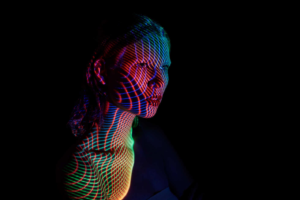HRV and Photobiomodulation for Vagal and Sympathetic ANS modulation
Kristen Sparrow • March 04, 2023

If nothing else, I aim to improve my patients' autonomic balance by increasing their vagal activity. Stimulating the vagus nerve indirectly to increase parasympathetic activity and decreasing sympathetic activity. Acupuncture can increase vagal activity as well as transcutaneous auricular vagal stimulation.
 I am extremely excited by this study. Not only does it validate my approach of using heart rate variability at the bedside, but it also suggests new modalities to use the acupuncture meridian system without needling. If nothing else, I aim to improve my patients’ autonomic balance by increasing their vagal activity.
I am extremely excited by this study. Not only does it validate my approach of using heart rate variability at the bedside, but it also suggests new modalities to use the acupuncture meridian system without needling. If nothing else, I aim to improve my patients’ autonomic balance by increasing their vagal activity.- Stimulating the vagus nerve indirectly to increase parasympathetic activity and decreasing sympathetic activity. Acupuncture can increase vagal activity as well as transcutaneous auricular vagal stimulation.
- I recommend other strategies in the clinic too. Breath work, probiotics which can enhance vagal activity, exercise. A summary of the summary follows.
- I use photoplethysmography in the clinic (PPG) and analyze the HRV from the tracing.
- This is the first I’ve ever heard of photobiomodulation, and I’m not sure how it works.
- Only 2 subjects were tested and they still got this thing published!! I’m going for it.
- One other take away that is fascinating is the Heart 7 increases sympathetic activity. Astonishing.
Autonomic nervous system (ANS) imbalance is common globally, leading to increased heart disease, cancer, depression and anxiety in part due to the increase in inflammation with altered ANS. To address this, a feasible and integrated system was proposed to measure and affect the ANS status. The system includes a signal-processing module, an LED stimulation module, a photoplethysmography (PPG) sensor, and an LCD display. Photobiomodulation (PBM) was used to stimulate two acupuncture points, and two subjects were tested. The results showed that stimulating the Neiguan (PC6) acupoint can inhibit the sympathetic nervous system, while stimulating the Shenmen (HT7) acupoint can activate it. However, further experiments are needed to confirm the effect.
Shan YC, Fang W, Wu JH. A System Based on Photoplethysmography and Photobiomodulation for Autonomic Nervous System Measurement and Adjustment. Life (Basel). 2023 Feb 17;13(2):564. doi: 10.3390/life13020564. PMID: 36836921; PMCID: PMC9961384.
https://pubmed.ncbi.nlm.nih.gov/36836921/
(1) Background: The imbalance of the autonomic nervous system (ANS) is common worldwide. Many people have high tension when the sympathetic nervous system is hyperactive or low attention when the parasympathetic nervous system is hyperactive. To improve autonomic imbalance, a feasible and integrated system was proposed to measure and affect the ANS status. (2) Methods: The proposed system consists of a signal-processing module, an LED stimulation module, a photoplethysmography (PPG) sensor and an LCD display. The heart rate variability (HRV) and ANS status can be analyzed from PPG data. To confirm HRV analysis from PPG data, an electrocardiogram (ECG) device was also used to measure HRV. Additionally, photobiomodulation (PBM) was used to affect the ANS status, and two acupuncture points (Neiguan (PC6) and Shenmen (HT7)) were stimulated with different frequencies (10 Hz and 40 Hz) of PBM. (3) Results: Two subjects were tested with the developed system. HRV metrics were discussed in the time domain and frequency domain. HRV metrics have a similar change trend on PPG and ECG signals. In addition, the SDNN was increased, and the parasympathetic nervous system (PNS: HF (%)) was enhanced with a 10 Hz pulse rate stimulation at the Neiguan acupoint (PC6). Furthermore, the SDNN was increased, and the sympathetic nervous system (SNS: LF (%)) was enhanced with a 40 Hz pulse rate stimulation at the Shenmen (HT7) acupoint. (4) Conclusion: A prototype to measure and affect the ANS was proposed, and the functions were feasible. The test results show that stimulating the Neiguan (PC6) acupoint can inhibit the SNS. In contrast, stimulating the Shenmen (HT7) acupoint can activate the SNS. However, more experiments must be conducted to confirm the effect by choosing different pulse rates, dosages and acupoints.

